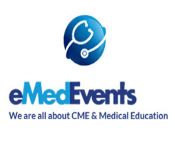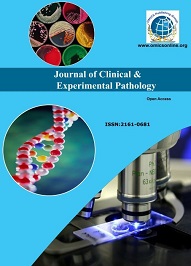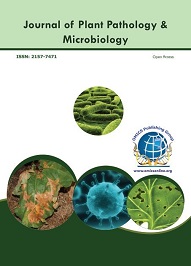Theme: Enlightening the Latest Advancements in Pathology
Pathology Congress 2020
Dear Speakers, Delegates,
Conference Series LLC LTD welcomes you to join the “18th Asia Pacific Pathology Congress" on November 25-26, 2020.
The Theme of Pathology Congress 2020 is to “ Enlightening the Latest Advancements in Pathology”.
This Pathology Conference is an International conference of 2 days, providing the most up-to-date information, research, guidance and policy discussion for professionals in the pathology field. It is your opportunity to learn and network with friends and colleagues from around the globe while having fun at the same time.
Thanks & Regards
Conference Committee
Conference Series invites all the participants from all over the world to attend “18th Asia Pacific Pathology Congress"(Pathology Congress 2020) during November 25-26, 2020. which includes prompt Keynote presentations, Oral talks, Poster presentations and Exhibitions.
The aim of our conference is to provide an opportunity to share knowledge, expertise along with unparalleled networking opportunities between a large number of medical and industrial professionals in this sphere. Conference Series gathers renowned Physicians, Pharmacists, Scientists, pathologists, Young Researchers, Healthcare Industrial Delegates and Talented Student Communities in the field of Medical Science under a single roof where networking and global partnering happens for the acceleration of future research.
About Pathology Congress 2020
Conference Series through its Open Access Initiative is committed to make genuine and reliable contributions to the scientific community. Conference series LLC hosts over 700 leading-edge peer reviewed Open Access journals and has organized over 3000 scientific conferences all over the world.
Conference Series welcomes all Physicians, Pharmacists, Scientists, Young Researchers, Healthcare Industrial Delegates and Talented Student Communities in the field of Pathology Department to attend this 18th Asia Pacific Pathology Congress, where all the aspects of pathology will be discussed under single roof. Pathology Congress 2020 will be an excellent amalgamation of academia and industry as it involves every aspects of empirical and conceptual thinking in exploring new dimensions in this field. It is open to all types of research methodologies both from academia and industry.
Why to Attend Pathology Congress 2020?
Pathology Congress 2020 highlights the theme “Enlightening latest advancements in Pathology” With members from around the world focused on learning about pathology and its advances in innovation of Pharmaceutical, Food, Brewing Industries, Clinical Healthcare Systems, Hospitals and Research Organizations. This is the best opportunity to reach the largest assemblage of participants from the pathology community conduct presentations, distribute information, meet with current and potential scientists, make a splash with new Medical techniques in recent trends, and receive name recognition at this 2-day event. World-renowned speakers, scientists, doctors, the most recent innovations, developments, and the newest updates in Pathology Congress 2020 are importance of this conference.
Pathology is a subject for the professionals who looks beyond the clinical expectations. Pathology Congress 2020 gathers all the extroverts under one roof of current advances.
Who should attend?
- Pathologists
- Microbiologists
- Oncologists
- Pharmacists
- Neurologists
- Immunologist
- Therapists
- Vaccine Developers
- Dermatologists
- Epidemiologists
- Gastroenterologists
- Ophthalmologists
- Pediatricians
- Botanical Pathologists
- Cardiologists
- Gynecologists
- Veterinary pathologists
For Researchers & Faculty:
- Speaker Presentations
- Poster Display
- Symposium hosting
- Workshop organizing
For Universities, Associations & Societies:
- Association Partnering
- Collaboration proposals
- Academic Partnering
- Group Participation
For Students & Research Scholars:
- Poster Competition (Winner will get Best Poster Award)
- Young Researcher Forum (YRF Award to the best presenter)
- Student Attendee
- Group registrations
For Business Delegates:
- Speaker Presentations
- Symposium hosting
- Book Launch event
- Networking opportunities
- Audience participation
For Companies:
- Exhibitor and Vendor booth
- Sponsorships opportunities
- Product launch
- Workshop organizing
- Scientific Partnering
- Marketing and Networking with clients
Questions.....?
Contact us @ +813-4578-0247
Track 1: Anatomical & Forensic Pathology
Anatomical Pathology is a medical specialty that is concerned with the diagnosis of disease based on the macroscopic, microscopic, biochemical, immunologic and molecular examination of organs and tissues.
Forensic Pathology is focuses on determining the cause of death by examining a corpse. A post mortem is performed by a medical examiner, usually during the investigation of criminal law cases and civil law cases in some jurisdictions.
Track 2: Clinical & Experimental Pathology
Clinical Pathology is a medical specialty that is concerned with the diagnosis of disease in laboratory analysis in body liquids, for example, blood, pee, and tissue homogenates or concentrates utilizing the devices of science, microbiology, haematology and sub-atomic Pathology. This process requires a medicinal residency. Clinical Pathologists work in close efforts with clinical researchers such as clinical organic chemists, clinical microbiologists, therapeutic technologists, healing centres, and alluding doctors to guarantee the exactness and ideal usage of lab testing.
Experimental Pathology, otherwise called Investigative Pathology is the logical investigation of decease procedures through the Microscopic or atomic examination of organs, tissues, cells, or body liquids from infected organisms. It is firmly related, both verifiably and in advanced modern settings, to the medicinal field of Pathology.
Track 3: Current Trends in Pathology
Pathology groups face a number of challenging pathology trends in the era of radical healthcare reform. One of the primary trends is that like clinical laboratories, these businesses are carrying significant and potentially unsustainable levels. Medical laboratories and pathology groups are also facing enormous levels of change in their clinical, regulatory and financial environments.
Other pathology trends include:
- Growing emphasis on the continuum of care
- Increasing patient interaction directly with the lab organization
- Mounting demands of interoperability across a proliferation of disparate information technology systems to achieve meaningful use
Track 4: Cytopathology
Cytopathology is a branch of pathology that reviews and findings sicknesses on the cell level. A cytopathologist is an anatomic pathologist prepared in the analysis of human sickness by methods for the investigation of cells gotten from body discharges and liquids by scratching, washing, or wiping the surface of a sore, or by the goal of a tumor mass or body organ with a fine needle. Cytopathology is likewise normally used to research thyroid sores, ailments including sterile body cavities (peritoneal, pleural, and cerebrospinal), and an extensive variety of other body locales.
Track 5: Digital Pathology
Advanced Pathology cam likewise be alluded as virtual microscopy is a picture based data condition which is empowered by PC innovation that takes into account the Pathology Events administration of data created from a computerized slide. It includes the catching, overseeing, breaking down and deciphering advanced data from a glass slide. With the coming of Whole-Slide Imaging, the field of Digital Pathology has detonated and is at present viewed as a standout amongst the most encouraging roads of symptomatic drug so as to accomplish much quicker, better and less expensive analysis, visualization and expectation of malignancy and other vital infections.
Track 6: Gastrointestinal and Liver Pathology
Gastrointestinal pathology (counting liver, gallbladder and pancreas) is a perceived sub-forte teach of Surgical Pathology. Acknowledgment of a sub-claim to fame is by and large identified with committed cooperation preparing offered inside the subspecialty or, then again, to surgical pathologists with an extraordinary intrigue and broad involvement in gastrointestinal pathology. Gastrointestinal pathologists are widely sought for their expertise in the full range of digestive disorders, including Barrett's oesophagus and colorectal cancer, as well as less common diseases of the liver, pancreas, and appendix.
Track 7: Head & Neck Pathology
Head and Neck Pathology is the anatomical part of Pathology which deals with the study of head and neck related pathological issues. The Head and neck forms the specialized region of the body. The head and neck region is the most complicated area in the body, while other regions are less complex compared to head and neck region. The study of head & neck Pathology involves the examination of infectious tumours caused by particular microorganisms. The study includes the parts of the body like thyroid, parathyroids, salivary glands, maxillofacial region, and upper respiratory tract.
Track 8: Histopathology
Histopathology is manages the infinitesimal examination of tissue keeping in mind the end goal to concentrate the indications of an ailment. In particular, in clinical medication, histopathology tends to the examination of a biopsy or surgical example by a pathologist, after the example has been handled and histological segments have been put onto glass slides. Interestingly, Cytopathology looks at free cells or tissue sections. Histopathology can just clarify as, the infinitesimal examination of organic tissues to watch the presence of ailing cells and tissues in fine detail.
Track 9: Immunopathology
Immunopathology is a branch of science that deals with the immune responses related with disease and disorders. It incorporates the investigation of the Pathology of an organism, organ framework, or malady as for the resistant framework, insusceptibility, and safe responses. In science, it alludes to harm brought on to a life form by its own particular invulnerable reaction, subsequently of Antigen Infection.
- Immunopathology is the branch of biomedical science worried with invulnerable reactions to sickness, with immunodeficiency maladies, and with ailments brought about by resistant systems.
- Immunopathology is the investigation of the auxiliary and useful indications connected with insusceptible reactions to infection or with illnesses created by resistant systems.
Immunohistochemistry (IHC) alludes to the way toward distinguishing antigens (e.g. proteins) in cells of a tissue area by abusing the guideline of antibodies restricting particularly to antigens in organic tissues.
Track 10: Molecular diagnostics of pathology
Molecular Diagnostics of Pathology is a term used to portray a wide number of laboratory tests. In general, it alludes the studies of tissues collected from the body under a microscope to diagnose or analyse and specialists call it, "Pathology". In this sense, it may be utilized to depict by looking the cells of the cervix after a Pap smear to check for confirmation of growth or infection. It may likewise be utilized to portray taking a sample at an example of Skin Tissue collected on a biopsy to check for proof of skin disease. There are a wide range of employments for Analytic Pathology.
Track 11: Ophthalmic Pathology
Ophthalmology that spotlights on illnesses of the eye and its neighboring tissues. Ophthalmic pathology manages the perceptible and minuscule examination and determination of surgical and post-mortem examples gathered from the eye and visual adnexa (conjunctiva, eyelid, lacrimal framework, and circle). Immunohistochemistry, atomic testing, and electron microscopy are likewise once in a while utilized. The ophthalmic pathologist has preparing in both ophthalmology and pathology. Ophthalmic pathologists think about tissues extracted by Ophthalmologists to give an exact conclusion of the ailment. The ailing tissue is analyzed visibly (net examination) and by light microscopy.
Track 12: Neuropathology
Neuropathology is the investigation of malady of sensory system tissue, ordinarily as either little surgical biopsies or entire body dissections. Neuropathology is a subspecialty of Anatomic Pathology, neurology, and neurosurgery. It should not be mistaken for neuropathy, which alludes to clutters of the nerves themselves (ordinarily in the fringe sensory system). Neuropathologists are medicinal authorities with skill in the determination of sensory system infections by gross, tiny and atomic examinations.
Neuropathologists are principally required in the analysis of infections of cerebrum, spinal line, fringe nerve and muscle. These substances go from inborn issue to tumors to degenerative sicknesses. A run of the mill neuropathology rehearse incorporates both surgical and posthumous tissue analysis.
Track 13: Oncopathology
The word Cancer indicates almost 200 unique diseases that begin when a portion of the body gets to be unusual, developing and multiplying rapidly. Typically, cells develop gap to create more cells just when the body needs them. Some of the time cells continue separating when new cells are not required. These additional cells may shape a mass of tissue, called a growth or tumour. A tumour might be generousnon-harmful or carcinogenic. Unlike to normal cells, cancerous cells multiply with no control. They don't self-destruct or die when they get to be exhausted or harmed. Cancer cells swarm out solid cells and keep them from doing their occupations. They can likewise attack encompassing tissue or spread too far off ranges of the body to make new Tumours, a procedure called metastasis.
Track 14: Pathological Case Reports
A Case Report is a detailed report of the symptoms, signs, Diagnosis, treatment, and follow-up of an individual patient. Case reports may contain a demographic profile of the patient, but usually describe an unusual or novel occurrence. Some case reports also contain a literature review of other reported cases.
Track 15: Pathology and Laboratory Medicine
Pathology is the study or examination of a particular disease and its behavior. It mainly caters to interpret the microscopic images of the ligaments or body tissues that cause, process the diseases and developed in the body of an individual. Experts who work in this field are called “Pathologists”.
Laboratory medicine is the field of medicine where specimens of body fluids, tissues, ligaments, etc. examined in clinical laboratories for the study of the treatment, cure, and prevention of the disease.
Track 16: Plant Pathology
Plant science is the investigation of diversities, capacities and structures of plants. Plant illnesses are brought about by living creatures (called pathogens, for example, growths, microorganisms, infections, nematodes, phytoplasmas, protozoa, and parasitic plants; and by nonliving specialists, for example, air toxins, supplement lopsided characteristics, and different natural variables. Plant pathology is a multi-disciplinary science that incorporates investigation of plant infections as well as manages host species, for example, plant science and plant physiology.
Track 17: Pulmonary Pathology
Pulmonary Pathology studies lung tissue to evaluate presence of disease and assist in therapeutic interventions as clinically indicated. The diagnosis of inflammatory or fibrotic diseases of the lungs is considered by many pathologists to be particularly challenging. Pathologists on the administration use molecular science, immunohistochemistry, and ultra-structural procedures in their demonstrative workups. Pulmonary Pathology diseases cover a diverse range of neoplastic and non-neoplastic disorders that continue to pose challenges to pathologists on a daily basis. Diagnostic specimens are often obtained via bronchoscopic transbronchial biopsy, CT-guided percutaneous biopsy, or video-assisted thoracic surgery.
Track 18 :Oral and maxillofacial Pathology:
Oral pathology is the specialty of dentistry and discipline of pathology that contracts with the nature, identification, and management of diseases affecting the oral and maxillofacial regions (the mouth and jaw areas). It is a science that explores the causes, processes, and effects of these diseases.
Oral and maxillofacial pathology is apprehensive with breakdown and study of the causes and effects of diseases affecting the oral and maxillofacial region. It is sometimes measured to be a specialty of dentistry and pathology. Occasionally the term head and neck pathology is used instead, but this influence imply that the pathologist deals with otorhinolaryngology disorders (i.e. ear, nose and throat) in accumulation to maxillofacial disorders. In this role there is some connection between the expertise of head and neck pathologists and that of endocrine pathologists.
The pathology market is projected to reach a value of USD 44.4 billion by 2024 from USD 33.0 billion in 2019, at a CAGR of 6.1% from 2019 to 2024. The high incidence of cancer and other target diseases, availability of reimbursement, and the growing focus on personalized medicine are the major factors driving the growth of the pathology market.
Based on product & service, the pathology market is segmented into services, consumables, and instruments. The services segment accounted for the largest share of the anatomic pathology market in 2018. The large share of this segment can be attributed to the availability of reimbursements for diagnostic tests, rapid growth in the geriatric population, and the increasing incidence of cancer and other chronic diseases.
Based on end user, the pathology market is segmented into hospital laboratories, clinical laboratories, and other end users. In 2018, the hospital laboratories segment accounted for the largest market share and is expected to grow at the highest CAGR during the forecast period. The growth in this market can be attributed to the increasing number of patient visits to hospitals, growing number of in-house diagnostic procedures performed in hospitals, growing awareness regarding early disease diagnosis, and the availability of reimbursements in developed markets for clinical tests performed in hospitals.
By region, the anatomic pathology market is segmented into North America, Europe, Asia Pacific, and the Rest of the World (RoW). In 2018, North America accounted for the largest market share, followed by Europe. The rising prevalence of chronic diseases, increasing healthcare expenditure, the high-quality infrastructure for hospitals and clinical laboratories, and the presence of major market players in the region are driving the growth of the anatomic pathology market in North America.
The prominent players operating in the anatomic pathology market include F. Hoffmann-La Roche Ltd. (Switzerland), Danaher Corporation (US), Thermo Fisher Scientific (US), Hologic, Inc. (US), Agilent Technologies (US), Becton, Dickinson and Company (US), Sakura Finetek (Japan), Merck KGaA (Germany), Bio SB (US), Diapath S.p.A. (Italy), and BioGenex Laboratories (US).
Digital Pathology Market:
The global digital pathology market is projected to be valued at $383.9 Million in 2016 and is expected to grow at a CAGR of 12.3% from 2017 to reach to $756.1 Million by 2022. Growth in the overall market is mainly driven by factors such as the growing applications of digital pathology in drug development and companion diagnostics, ease of consultation, increasing adoption of digital pathology to enhance lab efficiency, rising prevalence of cancer, and increasing initiatives by governments and industry players. Base year considered for the report is 2016 and the forecast period is 2017–2022.
Conference Highlights
- Anatomical & Forensic pathology
- Clinical & Experimental Pathology
- Current Trends in Pathology
- Cytopathology
- Digital Pathology
- Gastrointestinal and Liver Pathology
- Head & Neck Pathology
- Histopathology
- Immunopathology
- Molecular diagnostics of pathology
- Ophthalmic Pathology
- Neuropathology
- Oncopathology
- Pathological Case Reports
- Pathology and Laboratory Medicine
- Plant Pathology
- Pulmonary Pathology
- Oral and Maxillofacial Pathology
To share your views and research, please click here to register for the Conference.
To Collaborate Scientific Professionals around the World
| Conference Date | November 25-26, 2020 | ||
| Sponsors & Exhibitors |
|
||
| Speaker Opportunity Closed | |||
| Poster Opportunity Closed | Click Here to View | ||
Useful Links
Special Issues
All accepted abstracts will be published in respective Our International Journals.
- Journal of Clinical & Experimental Pathology
- Journal of Plant Pathology & Microbiology
- Diagnostic Pathology: Open Access
Abstracts will be provided with Digital Object Identifier by










